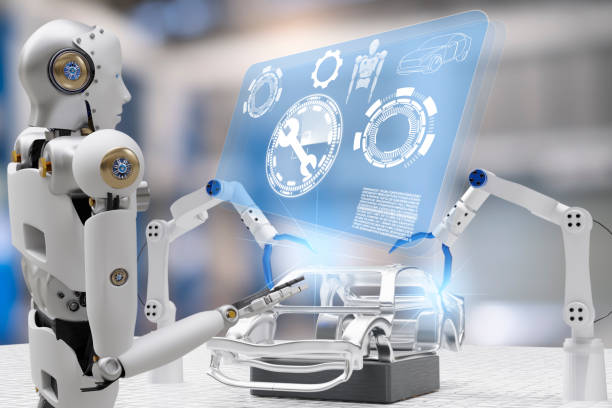Introduction
Artificial intelligence (AI) and robotics are revolutionizing industries, transforming the nature of work, and reshaping automation. From self-driving vehicles to robotic warehouse assistants, AI-powered machines are enhancing efficiency, reducing costs, and streamlining workflows. However, this rapid advancement also raises important questions about job displacement, workforce evolution, and the need for new skill sets. As AI robotics becomes increasingly integrated into workplaces, businesses and employees must adapt to this new era of automation.
The Role of AI Robotics in Work and Automation
AI-powered robots are no longer confined to factory assembly lines. They are now present in various sectors, improving productivity and optimizing complex processes. Some key areas where AI robotics is making a significant impact include:
1. Manufacturing and Industrial Automation
The manufacturing sector has been one of the earliest adopters of AI-driven robotics. Advanced robots equipped with machine learning and computer vision are:
- Enhancing Production: AI-powered robotic arms assemble products with speed and precision, minimizing human error.
- Ensuring Workplace Safety: Robots perform dangerous tasks, reducing workplace accidents and improving overall safety.
- Optimizing Supply Chains: AI algorithms predict demand fluctuations and streamline inventory management.
2. Healthcare and Medical Assistance
AI robotics is revolutionizing healthcare by assisting doctors, surgeons, and caregivers in multiple ways:
- Surgical Robots: Systems like da Vinci Surgical System enable minimally invasive procedures with high precision.
- AI Assistants: Robots help in patient care, monitoring vital signs, and providing companionship to the elderly.
- Drug Discovery: AI accelerates pharmaceutical research, identifying potential drug candidates faster than traditional methods.
3. Retail and Customer Service
Retailers are leveraging AI robotics to enhance customer experience and optimize operations:
- Autonomous Stores: AI-powered checkout-free stores like Amazon Go allow customers to shop without cashiers.
- Customer Service Robots: Robots like Pepper assist customers in malls, hotels, and banks by providing information and answering queries.
- Warehouse Automation: Companies like Amazon and Alibaba use AI-driven robots for order fulfillment and inventory management.
4. Transportation and Logistics
The logistics industry is undergoing a major transformation due to AI robotics:
- Self-Driving Vehicles: Autonomous trucks and delivery robots are reducing human dependency in transportation.
- Drones for Delivery: Companies like UPS and DHL use drones for last-mile deliveries, making shipping faster and more efficient.
- Smart Traffic Management: AI systems analyze real-time traffic data to optimize routes and reduce congestion.
5. Agriculture and Farming
AI robotics is improving agricultural efficiency through precision farming techniques:
- Automated Harvesting: AI-powered robots pick fruits and vegetables with precision, reducing food waste.
- Smart Irrigation Systems: AI optimizes water usage based on soil conditions and weather patterns.
- Pest Control: AI-driven drones identify pest infestations and apply pesticides only where needed.
The Impact on the Workforce
The rise of AI robotics has sparked concerns about job displacement. While automation may replace some roles, it also creates new opportunities:
- Job Loss in Routine Tasks: Jobs involving repetitive, predictable tasks are at risk of automation.
- Emergence of New Roles: AI development, robot maintenance, and cybersecurity jobs are in high demand.
- Reskilling and Upskilling: Workers must adapt by learning new skills in AI, data analysis, and robotics programming.
Challenges and Ethical Considerations
As AI robotics continues to reshape work and automation, several challenges need to be addressed:
- Ethical AI Development: Ensuring AI operates fairly and transparently without biases.
- Data Privacy and Security: AI-driven systems must protect user data from cyber threats.
- Regulatory Policies: Governments must implement policies to balance automation benefits with workforce stability.
The Future of Work with AI Robotics
AI robotics is not about replacing humans—it’s about enhancing human potential. The future of work will likely see a collaborative approach, where AI and robots assist employees rather than replace them entirely. Businesses must invest in workforce training, and employees should embrace technological advancements to stay competitive in an AI-driven world.
Conclusion
AI robotics is reshaping the future of work and automation by enhancing efficiency, reducing operational costs, and transforming industries. While challenges like job displacement exist, the key to a successful transition lies in adaptation, education, and ethical AI deployment. As businesses and workers navigate this evolving landscape, the focus should be on harnessing AI robotics for innovation and growth, ensuring a more productive and sustainable future for all.

